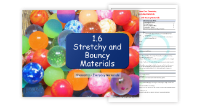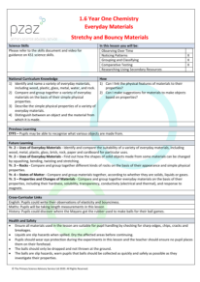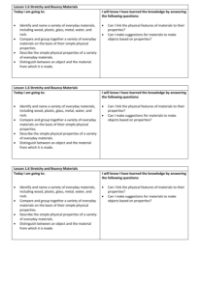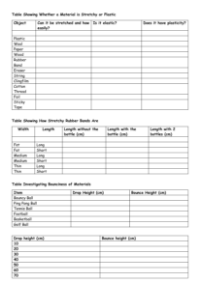Other Properties of Materials - Presentation

Science Resource Description
In an engaging Chemistry lesson about everyday materials, students explore the intriguing properties of stretchiness and bounciness. They begin by considering how the physical features of different materials are linked to their properties and how these properties influence the use of materials in creating objects. The lesson poses thought-provoking questions such as why a car bounces on a trampoline and what happens to the trampoline's fabric upon impact. These questions encourage students to observe and think critically about the physical interactions between objects and materials in a real-world context.
The lesson includes hands-on investigations to delve deeper into the concepts of stretchiness and elasticity. Students experiment with rubber bands to discover the relationship between how far they are stretched and the distance they can fly. They also compare the stretchiness of different materials, noting which ones are most elastic and which exhibit plasticity—stretching without returning to their original shape. Further exploration into the bounciness of balls leads students to understand how material and weight affect a ball's bounce. By the end of the lesson, students are expected to identify the property that allows materials to stretch and return to their original size, understand why sailors use tyres for docking, and make informed suggestions about material choices based on their properties. The lesson aims to solidify students' understanding of stretchy and bouncy materials and how these properties are applied in everyday life.





